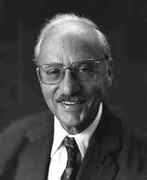Person: Dantzig, George

George Dantzig was an American mathematical scientist who worked in operations research, computer science, economics and statistics. He is best known for inventing the simplex algorithm for linear programming.
Mathematical Profile (Excerpt):
- Tobias was working on his most famous work Number: the language of science in the late 1920s and George helped him.
- In 1937 Dantzig was awarded an M.A. in mathematics, having studied under T H Hildebrandt, R L Wilder and G Y Rainer.
- Unhappy with abstract mathematics, the only courses he enjoyed being on statistics, Dantzig decided to give up his graduate studies.
- Having read statistics papers by Neyman, Dantzig wrote to him in 1939 asking if there was any possibility he could obtain a teaching assistantship at Berkeley so that he could complete his doctoral studies under Neyman's supervision.
- It took Neyman a little while to arrange the teaching assistantship but he managed to do so and Dantzig began for a second time to undertake graduate studies.
- In 1946, after a break of five years, Dantzig returned to Berkeley for one semester, receiving his doctorate in mathematics from the University of California.
- In 1947 Dantzig made the contribution to mathematics for which he is most famous, the simplex method of optimisation.
- Dantzig mechanised the planning process by introducing "programming in a linear structure", where "programming" has the military meaning explained above.
- The term "linear programming" was proposed by T J Koopmans during a visit Dantzig made to the RAND corporation in 1948 to discuss his ideas.
- Having discovered his algorithm, Dantzig made an early application to the problem of eating adequately at minimum cost.
- The particular problem solved was one which had been studied earlier by George Stigler (who later became a Nobel Laureate) who proposed a solution based on the substitution of certain foods by others which gave more nutrition per dollar.
- He then goes on to say that Kantorovich received the Nobel Prize for his contribution and expresses "outrage" that Dantzig did not.
- Dantzig became a research mathematician with the RAND Corporation in 1952 and during this period led the work on implementing linear programming on computers.
- Dantzig has received many honours including the Von Neumann Theory Prize in Operational Research in 1975; The National Medal of Science presented by the president of the United States in 1976; the National Academy of Sciences Award in Applied Mathematics and Numerical Analysis in 1977; the Harvey Prize in Science and Technology from Technion, Israel, in 1985; the Silver Medal from the Operational Research Society of Britain in 1986; the Adolph Coors American Ingenuity Award Certificate of Recognition from the State of Virginia in 1989; and the Special Recognition Award from the Mathematical Programming Society in 1994.
Born 8 November 1914, Portland, Oregon, USA. Died 13 May 2005, Palo Alto, California, USA.
View full biography at MacTutor
Tags relevant for this person:
Origin Usa, Statistics
Thank you to the contributors under CC BY-SA 4.0! 

- Github:
-

- non-Github:
- @J-J-O'Connor
- @E-F-Robertson
References
Adapted from other CC BY-SA 4.0 Sources:
- O’Connor, John J; Robertson, Edmund F: MacTutor History of Mathematics Archive
